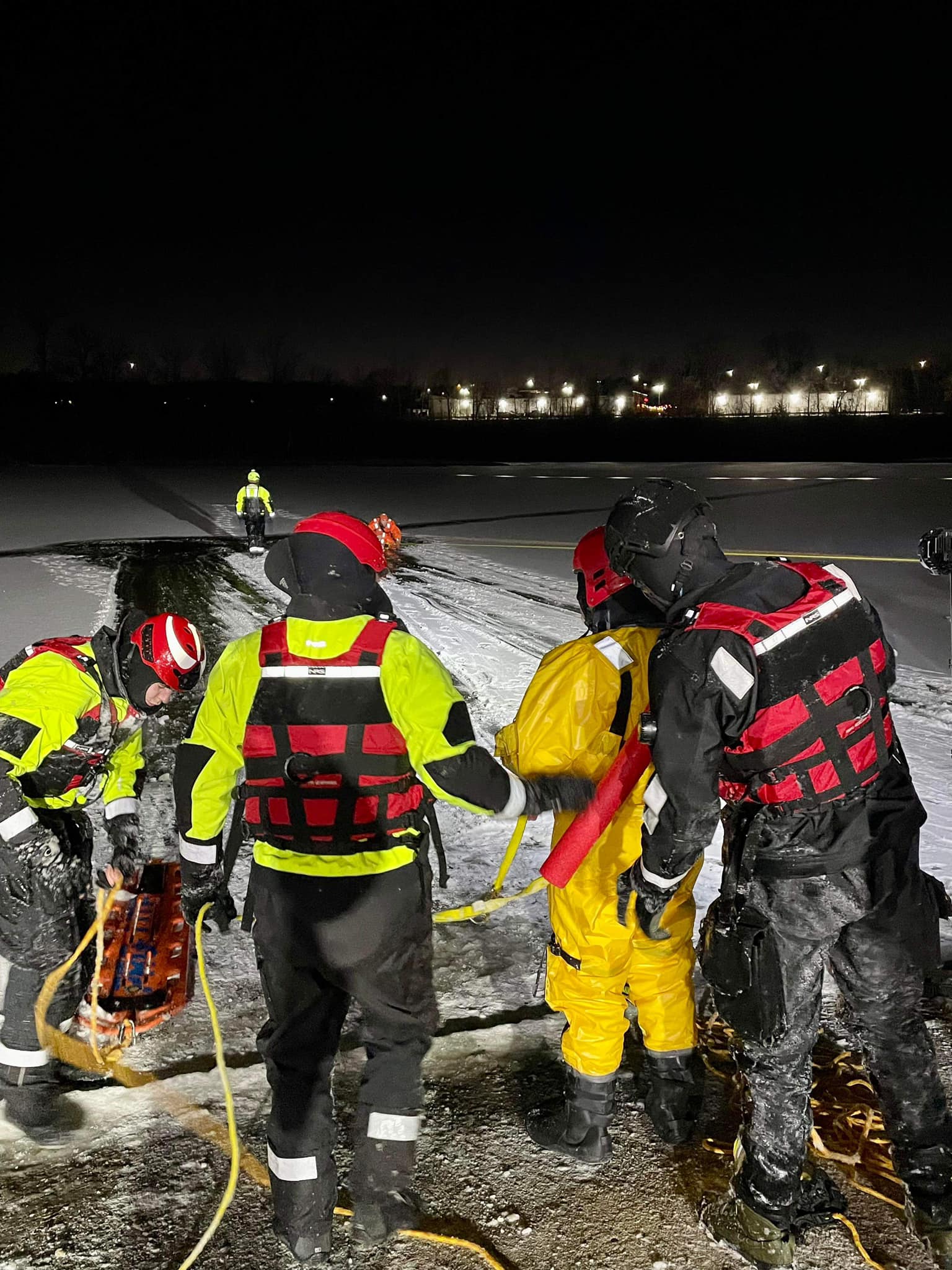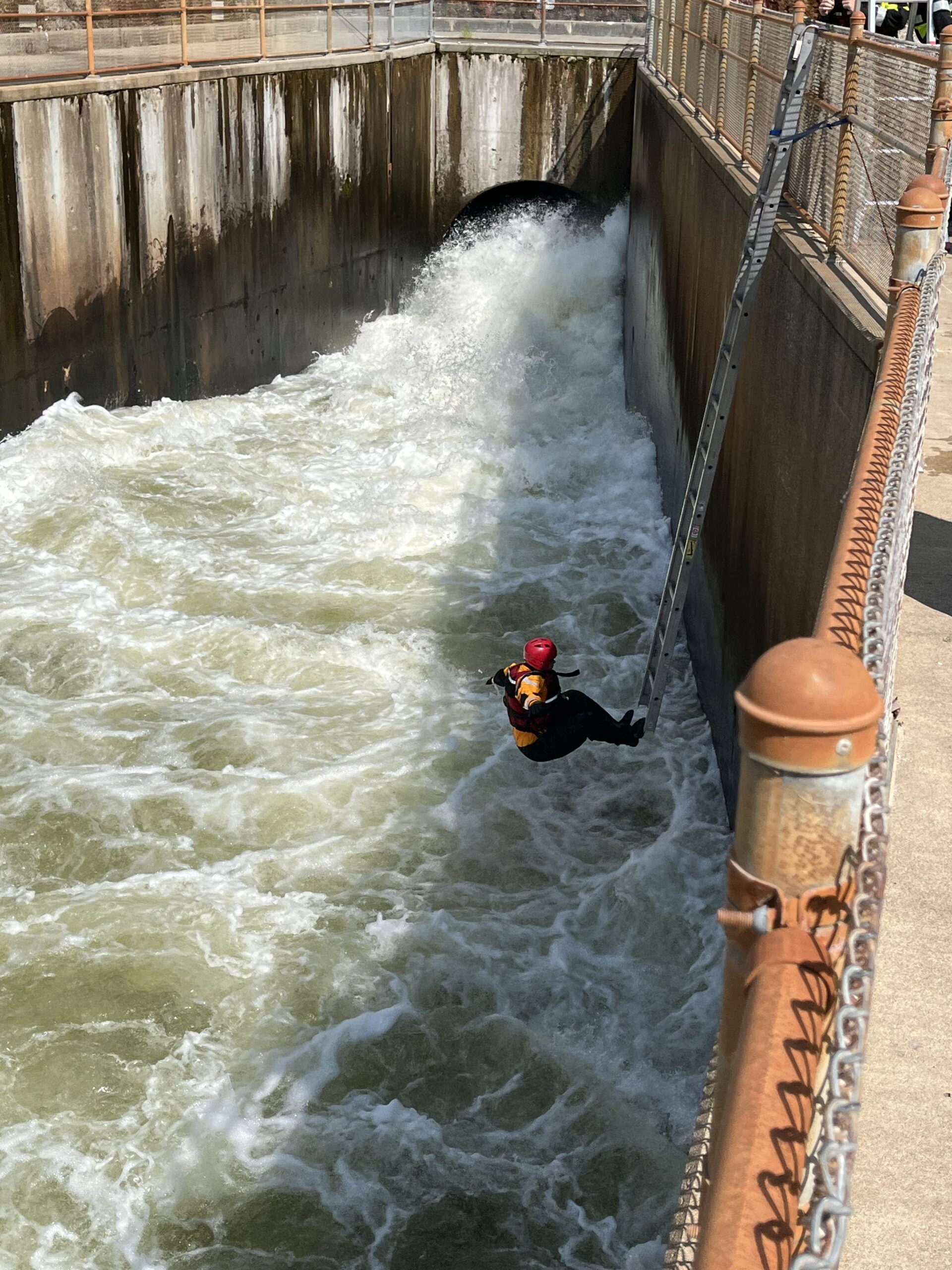Water Rescue
Muddy River Rescue specializes in various aquatic operations, providing expert, rapid-response services to recover individuals, vehicles, and valuables from challenging aquatic environments. With highly trained divers and state-of-the-art equipment, we ensure safety and efficiency in every mission.
Ice Rescue Technician
The ERD Surface Ice Rescue Ops component is designed to develop the knowledge and skills necessary for public safety teams to properly respond and execute operations on or near thin ice conditions.ERD Surface Ice Rescue students will learn how to approach several types of victims in varying environments as a primary tender, primary rescue, backup rescuer and backup tender. Students will understand, perform and master ice rescue decision making processes. ERD Surface Ice Rescue students will have exposure to the use and importance of surface ice rescue equipment and should prepare to spend several hours in PFDs/immersion suits.
Swiftwater Rescue Technician
This challenging and rewarding course is designed to provide information and hands on training to students / team members who may be called upon to respond to a swift water call. Swiftwater is defined by NFPA 1006/1670 guideline as “water moving at a rate greater than 1 knot.”Swift water is typically found in high hills, mountain areas or in flash flood areas designed for moving water away and represents water in a natural setting moving downhill. With large-scale flooding now common in rural and urban environments, moving water may be swift and the need for safe and effective training programs are in demand.
The purpose of the ERDI Swift Water program is to provide necessary skills and knowledge in performing life saving operations in swift water, and the importance of understanding the dangers of moving water such as strainers and hydraulics.
After successful completion of the ERDI Swift Water Ops program, responders are expected to understand how to recognize the presence of hazardous conditions, protect themselves, secure the area, call for additional resources, activate an emergency plan, assess conditions and attempt a rescue.


